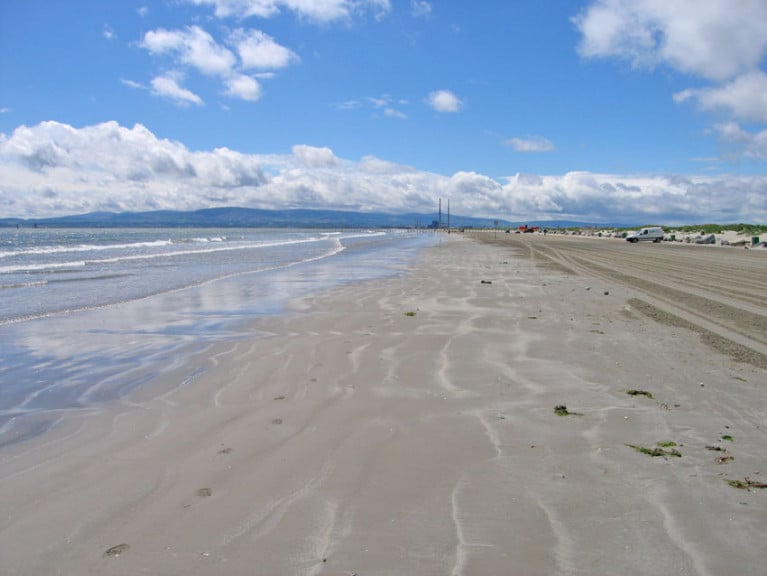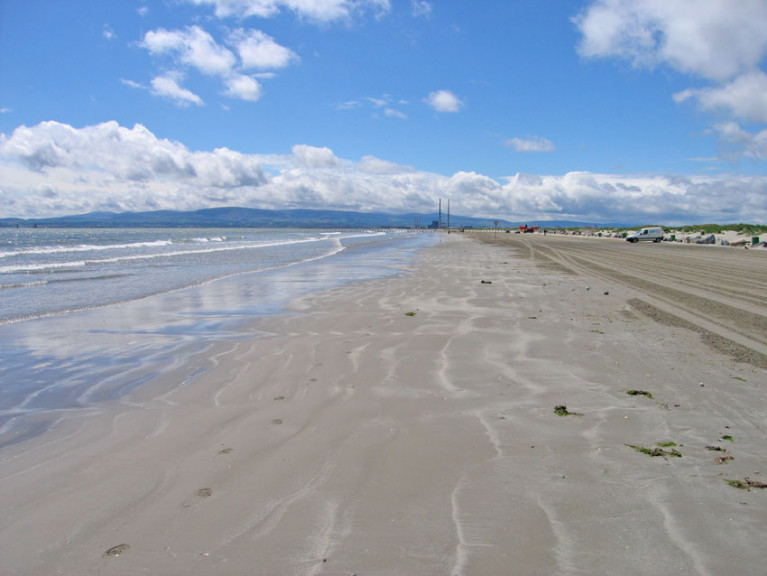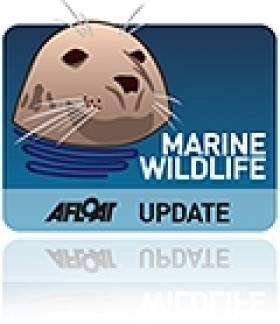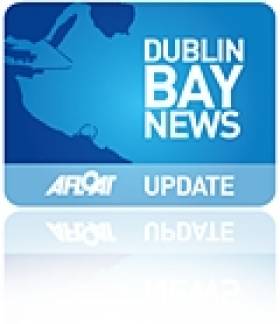Displaying items by tag: Dollymount Strand
Howth Coastguard and Dun Laoghaire Lifeboat Tasked to Dollymount Kitesurfer in Difficulty
It was a swift start to the New Year this afternoon (Sunday 1 January) for the team at Howth’s Irish Coast Guard unit as they were tasked to a kitesurfer who was blown offshore after the wind dropped near Dollymount Strand.
Dun Laoghaire RNLI’s inshore lifeboat was also called to the scene from across Dublin Bay and brought the kitesurfer ashore to the Howth coastguard team, who assessed the casualty and found they needed no further assistance.
Howth Coast Guard Unit said: “The kitesurfer was well prepared. They had a shore contact who was keeping an eye on them (who ultimately called the coastguard); a heavyweight winter weight wet suit [and] a buoyancy aid.
“Remember if you see someone in difficulty on or near the coast, dial 112/999 and ask for Irish Coast Guard.”
The number of drowning tragedies around Ireland this week has risen to six after the deaths of a man in his 60s and a teenage boy.
As BreakingNews.ie reports, the man was recovered unconscious from the water at Dollymount Strand in north Dublin yesterday afternoon (Friday 23 July).
Despite the vest efforts of lifeguards and off-duty medical personnel, he was pronounced dead at the scene.
Elsewhere, a 15-year-old boy rescued after getting into difficulty in Lough Sheelin on Tuesday (20 July) died in hospital on Thursday evening (22 July).
Their deaths bring the toll of drownings this week on the island of Ireland to five, following incidents in counties Cavan, Leitrim and Fermanagh and Down, as previously reported on Afloat.ie.
Mysterious Blue Balls Washed Up on Dublin Beach Prompt Concern
Small blue balls found on a North Dublin beach have prompted concerns around their origin and whether they pose a threat to a protected habitat, as the Irish Times reports.
Brian Bolger — who lives near Bull Island — says he has reported increasing numbers of the 25mm rubber-like spheres, both blue and orange, washing up on the island’s Dollymount Strand.
“We thought they were golf ball innards because there are two courses on the island,” he says.
But he later discovered that similar objects washed on an English beach were traced back to a nearby nuclear power station.
Those objects, known as Taprogge balls, are used in the cleaning process for cooling systems in power stations and other industrial processes.
It’s not yet confirmed if the balls found on Dollymount are of the same type, but their presence within the Dublin Bay Biopshere prompts concern for their potential to affect a sensitive habitat for many marine wildlife species.
The Irish Times has more on the story HERE.
Public Urged To Be On the Lookout for Invasive Blue Crab
Beach walkers have been urged to keep a lookout for invasive blue crab after a recent sighting in Dublin Bay.
As the Irish Examiner reports, the National Biodiversity Day Centre says a specimen was found on Dollymount Strand on 15 February, with a claw from the same species found on the same beach this past Tuesday (9 March).
It marks the first sighting of the crab, which is native marine wildlife on the US east coast, in Irish waters — though it has become established as an invasive species in the Mediterranean.
It’s as yet unknown whether the blue crab originated from the food trade, came as a stowaway in a ship’s hull or arrived by other means.
But the situation has prompted a call for vigilance by the public walking in coastal areas around Ireland — and for photographic evidence of any possible sighting.
The Irish Examiner has more on the story HERE.
Man Dies After Getting Into Difficulty Kitesurfing at Dollymount Strand
RTÉ News reports that a man in his 30s has died after getting into difficulty while kitesurfing at Dollymount Strand on Dublin Bay this morning (Saturday 31 October).
It’s understood that the man was pronounced dead at the scene before his body was removed to the Mater Hospital.
Basking Shark Carcass Beached On Dollymount Strand
#MarineWildlife - The carcass of a large basking shark has washed up and is decomposing on Dollymount Strand in North Dublin, as The Irish Times reports.
The gentle giant - one of the second largest species of fish in the world's oceans - was beached early yesterday (15 July) after being sighted floating in the River Liffey.
Dublin City Council said it was making plans to remove the carcass from the popular seaside spot on Bull Island.
Human Leg Found on Dollymount Strand
#DUBLIN BAY NEWS - Investigations are underway after a human leg was discovered on a beach in north Dublin yesterday morning.
RTÉ News reports that the body part was found along Dollymount Strand on Bull Island around 9am yesterday (19 October) - some 18 months after a human arm was discovered on the same beach.
The State Pathologist's Office has been notified.
Stunning Photos of Kitesurfing in Dublin Bay
#KITESURFING - Photographer Luis Faustino has captured some stunning shots of Dublin kitesurfer Rob Clarke in action off Dollymount Strand.
"Dublin is quite windy, especially near the sea, in the bay," writes Faustino. "It's natural to see kitesurfers in many places and one of my favorite spots is Bull Island."
Find more of Luis Faustino's Dublin Bay kitesurfing photos HERE.
€220m for 9km Pipeline to Cut Dublin Bay Pollution
Dublin City Council is proposing a mammoth 9km sewage outfall pipe to help make Dublin Bay cleaner - at a cost of €220m.
Herald.ie reports that the 5m-wide pipe - longer than the Dublin Port Tunnel - would dump effluent from the Ringsend treatment plant far offshore, thereby avoiding pollution in the bay and sensitive areas such as Bull Island, which recently lost its EU Blue Flag status for Dollymount Strand.
Plans for the project, which DCC head of waste Pat Cronin described as the "greenest and most economic solution" will be open to public consultation in the near future, with a timetable for completion by 2015.
The pipeline and redeveloped treatment plant will be funded via the Department of the Environment's water services investment programme.


























